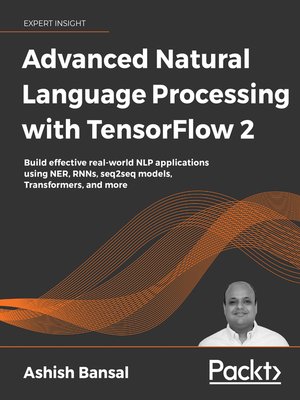Advanced Natural Language Processing with TensorFlow 2
ebook ∣ Build effective real-world NLP applications using NER, RNNs, seq2seq models, Transformers, and more
By Ashish Bansal

Sign up to save your library
With an OverDrive account, you can save your favorite libraries for at-a-glance information about availability. Find out more about OverDrive accounts.
Find this title in Libby, the library reading app by OverDrive.



Search for a digital library with this title
Title found at these libraries:
| Library Name | Distance |
|---|---|
| Loading... |
One-stop solution for NLP practitioners, ML developers, and data scientists to build effective NLP systems that can perform real-world complicated tasks
Key FeaturesRecently, there have been tremendous advances in NLP, and we are now moving from research labs into practical applications. This book comes with a perfect blend of both the theoretical and practical aspects of trending and complex NLP techniques.
The book is focused on innovative applications in the field of NLP, language generation, and dialogue systems. It helps you apply the concepts of pre-processing text using techniques such as tokenization, parts of speech tagging, and lemmatization using popular libraries such as Stanford NLP and SpaCy. You will build Named Entity Recognition (NER) from scratch using Conditional Random Fields and Viterbi Decoding on top of RNNs.
The book covers key emerging areas such as generating text for use in sentence completion and text summarization, bridging images and text by generating captions for images, and managing dialogue aspects of chatbots. You will learn how to apply transfer learning and fine-tuning using TensorFlow 2.
Further, it covers practical techniques that can simplify the labelling of textual data. The book also has a working code that is adaptable to your use cases for each tech piece.
By the end of the book, you will have an advanced knowledge of the tools, techniques and deep learning architecture used to solve complex NLP problems.
What you will learnThis is not an introductory book and assumes the reader is familiar with basics of NLP and has fundamental Python skills, as well as basic knowledge of machine learning and undergraduate-level calculus and linear algebra.
The readers who can benefit the most from this book include intermediate ML developers who are familiar with the basics of supervised learning and deep learning techniques and professionals who already use TensorFlow/Python for purposes such as data science, ML, research, analysis, etc.







